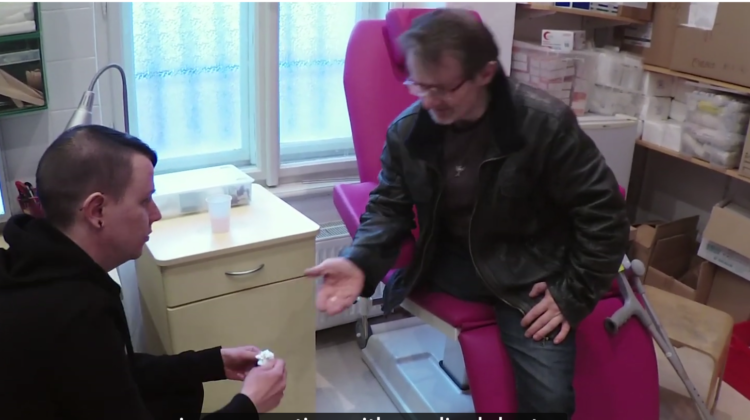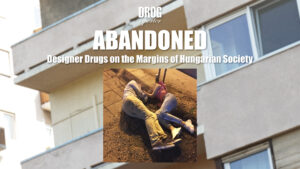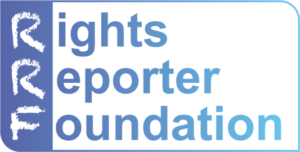A new movie produced by the alumni of our video training, tells the story of Petr, a 50 years old man from Prague, who lost his leg, his has no home, no job – but his has now hope to change his life with the help of opiate substitution treatment.
The Czech Republic is a country of contrasts regarding services for people who use drugs. Some services are provided perfectly, but others are completely missing. Its approach to drug policy is quite advanced. It has a relatively stable network of harm reduction services, and the treatment system is capable of guiding the client from the first contact to the aftercare. Non-profit organisations providing ‘addictology’ services are managed by distinguished professionals in this field. But there are still many gaps in the system. One of the most important is the limited availability of substitution treatment programs. We will focus on opioid substitution treatment centres, but as one of the countries with very high use of crystal meth (in Czech the famous pervitin) we would also like to introduce substitution care on stimulant substances.
While the number of other certified services in the Czech Republic has been rising slowly in recent years, the number of substitution programs has been stagnating for a long time, unlike the number of clients seeking this type of treatment. In 2017, about 17% of opioid users were registered for substitution treatment. The number of users receiving the substitution treatment is not better in the capital city of Prague, where almost three quarters of all users – about 10 thousand potential candidates for substitution treatment – are located. The use of opioid analgesics (for example tramadol and fentanyl) is increasing due to the low availability of substitution programs in some regions. Even worse, long term users often switch to devastating use of alcohol in combination with benzodiazepines.
Due to the insufficient number of substitution centres and thus limited capacity, the rules of standard substitution treatment in the Czech Republic are often strict and inflexible. It is an understandable way to prevent abuse of these services and eliminate overcrowding. On the other hand, the threshold between the service and the status of clients becomes relatively high and automatically selects those clients or patients who cannot meet their requirements. For example, regular attendance is a frequent requirement and only a limited number of absences are allowed. That often leads to exclusion. Substitution programs also often require negative toxicology, i.e. regular tests for the presence of other substances than the substitution substance. This requirement is very difficult to comply with for some clients, either because of their poly-drug use, the large incidence of dual diagnoses, or simply from the practical point of view of their social status and lifestyle. These clients are the ones who often drop out of substitution programs. In addition, the use of other substances may be due to an insufficient dose of the substitution drug, which is a very common phenomenon in the Czech Republic.
Exclusion from the substitution program entails an unavailability of its services for a longer period of time, typically 3-6 months. The patients are then usually dependent on the black market again, and begin to use with much more risk or switch to dangerous combinations of substances to fulfil their needs.
Current substitution treatment is only available for opiate addicts in the Czech Republic (if we do not count nicotine substitution preparations). The available substitutes are methadone and buprenorphine. Buprenorphine is available under the trade name Subutex® or Ravata®, which are increasingly being replaced by Suboxone®, which contains an opioid receptor antagonist – naloxone.
In addition to the insufficient local availability, the buprenorphine products are also very expensive. Mono-preparations, i.e. Subutex and Ravata, are not covered by health insurance at all. With Suboxone, reimbursement from health insurance is possible, but in practice we do not see it often. According to the 2018 Annual Report on Drug Situations, there are only a few dozen cases in which treatment is provided under this scheme.
However, the effectiveness of substitution treatment is hardly deniable. Regular administration of a substance with clinically proven composition in doctor-set doses and in the therapeutic environment has a significantly positive impact – not only on the patient’s physical health, but also on the stabilisation of his mental health, social situation, and crime reduction. In this way, the patient has the opportunity to abandon the routine and spend time on activities that develop his abilities and the whole society.
To build new substitution centres and cover all major cities (or at least regions) is the dream of all the experts in the field of addiction. However, such an increase in the availability of substitution treatment is a long term goal. The movie Petrova Cesta (Petr’s Journey) discusses how substitution treatment can take place in a primarily harm reduction facility, and what effects it brings.
Petr is one of the clients of OST. During the last year and a half of substitution treatment, his life situation turned 180 degrees. During the filming, which took almost 3 months, Petr moved and found a new partner. After filming, Petr even made a contract of employment and every day he‘s on his way to getting closer to the goals he was not even been able to imagine in the past. During the week he is in daily contact with the staff of the centre and continues to work on his self-development.
Good setting of OST for the most vulnerable is based on several factors. There must be a multidisciplinary team that has counselling and psychotherapeutic skills. It must be focused on the target group of drug users and involve the necessary knowledge and experience to work with an addict. It is inherently low-threshold, which is reflected in mutual expectations and the relationship between the centre and the client. There is space for individual sessions as well as group activities. There is a possibility of daily attendance and at the same time it is not necessary to rely on strict rules.
With this video, we would like to encourage more discussion about the possibilities of substitution treatment in low-threshold facilities, and inspire others like Petr inspires us.
David Pesek and Ria Al-Halabiova






